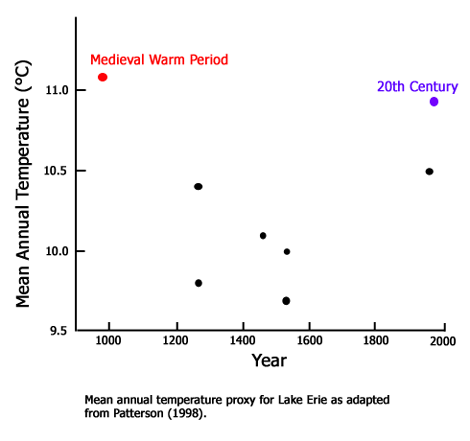Reference
Patterson, W.P. 1998. North American continental seasonality during the last millennium: high-resolution analysis of sagittal otoliths. Palaeogeography, Palaeoclimatology, Palaeoecology 138: 271-303.
Description
Seasonal temperature variations were obtained from δ18O(CaCO3) values of late Holocene sagittal fish otoliths recovered from archaeological sites along the southern and western basin of Lake Erie (~ 41.5°N, 82.75°W). Results of the analysis revealed that at the turn of the first millennium AD, "both summer maximum and mean annual temperatures in the Great Lakes region were found to be higher than those of the 20th century," whereas winter temperatures at that time were lower. Quantitatively, summer temperatures at AD 985 were 2 to 6°C warmer than those of the period 1936-1992, while mean annual temperatures were 0.2°C higher and mean winter temperatures 1.8°C lower. Hence, there was probably no significant difference between the mean annual temperature around AD 985 and the mean annual temperature of the 1980s and 90s.





